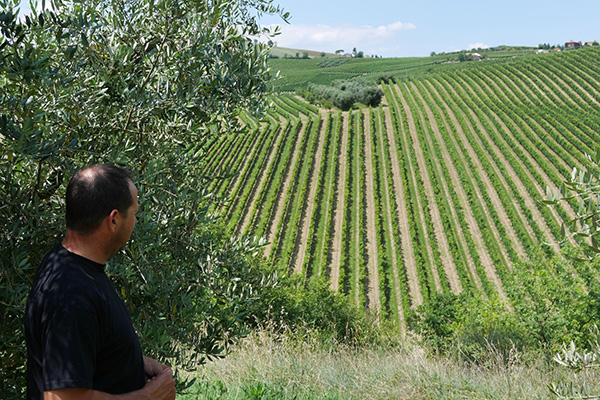Olive trees are resilient and long-living trees that can thrive for hundreds of years. However, various factors like weather extremes, pests, diseases, and improper care can cause olive trees to decline. The good news is that with some time and tender loving care, it is often possible to nurse an ailing olive tree back to health. This comprehensive guide provides tips and techniques on how to revive an olive tree and restore its vigor.
Assessing the Tree’s Condition
The first step is to assess the overall health of the olive tree. Look for these signs to determine if it is dead or still alive:
-
Check the trunk and branches – are they brittle and snap easily or still flexible? Olive wood should be flexible and greenish inside when scratched
-
Examine the roots if possible – they should be firm and white/cream, not mushy or hollow.
-
Look for any signs of life like new buds, shoots, or leaves emerging.
If the trunk, roots, and branches are completely brittle and the tree shows no new growth even after a season, it is likely dead. But if you find some flexibility or green under the bark, there is hope for revival
Diagnosing the Underlying Problem
To bring an ailing olive tree back to health, you need to identify and resolve the underlying issue. Common olive tree problems include:
Watering issues: Underwatering, overwatering, poor drainage. Check soil moisture before watering.
Weather damage: Frost, excessive wind, or extreme heat.
Nutrient deficiencies: Lack key nutrients like nitrogen or iron. Test soil and fertilize.
Pests: Scale, olive fruit fly, olive moth. Treat with appropriate organic pesticide.
Diseases: Verticillium wilt, olive knot. Seek expert diagnosis and treatment.
Root damage: From transplant shock, damaged roots, or restricted space.
Carefully observe the olive tree and surrounding environment to deduce likely causes. Reference the olive tree’s ideal growing conditions to identify any deficiencies.
Restorative Care for the Olive Tree
Once you’ve diagnosed the likely problem, take these restorative steps to rejuvenate the struggling olive tree:
-
Water thoroughly but infrequently if under-watered. Or allow soil to dry out if over-watered.
-
Prune out dead wood and trim back some branches to reduce demand on the tree.
-
Fertilize with a balanced organic fertilizer to provide nutrients.
-
Treat pests or diseases with appropriate organic sprays. Remove and destroy infected plant material.
-
Improve drainage if soil is heavy, dense, or retaining too much moisture.
-
Protect from weather like cold snaps using covers.
-
Repot or transplant if pot bound or experiencing restricted root growth.
-
Move to a sunnier spot if lacking sufficient sunlight.
-
Clear surrounding weeds to reduce competition for nutrients.
-
Be patient! It takes time for stressed trees to recover.
Consistency and attentive care is key. Monitor the tree’s progress while allowing time for it to regain strength.
Long-Term Olive Tree Care
To ensure the revived olive tree remains healthy for the long run, commit to these maintenance practices:
-
Water deeply but infrequently, allowing soil to partially dry out between waterings.
-
Fertilize each spring with a balanced organic fertilizer.
-
Prune annually to remove dead wood, shape, and promote new growth.
-
Monitor for pests like olive fruit fly and treat quickly if detected.
-
Rake and dispose fallen leaves and fruits to prevent disease.
-
Protect from harsh weather. Cover from frost or extreme heat.
-
Weed and mulch around the root zone to reduce competition.
-
Repot occasionally as the olive tree outgrows its container.
With some attentive care and TLC, it is possible to nurse struggling olive trees back to robust health. But severely declining trees may ultimately need replacement. If an expert diagnosis confirms the olive tree is unsalvageable, use the experience to select a more suitable variety or site for a new tree. With the right growing conditions and care, olive trees can thrive for decades or even centuries to come.

How to bring an olive tree back to life
It’s not unusual to think you have killed your olive tree, luckily, we can tell you how to bring an olive tree back to life. The good news is, what looks dead is not always dead. So, this blog is about stopping before you dig that ‘dead’ plant out and chuck it away. Many first-time gardeners assume that once the leaves have fallen off, the plant is irretrievably dead. This is often far from the truth – most plants will lose their leaves when stressed about water. There’s not much point having leaves to photosynthesise if you haven’t got any water. So, the first thing is to restore the supply.
Soak freshly planted trees for at least an hour
OLIVE TREE EMERGENCY RESCUE Olive Tree Care Top Tips
FAQ
How do you revive a dying olive tree?
Water thoroughly. Check the soil periodically and water thoroughly when the soil is dry to a depth of 2.5 cm (1 inch) – check with your finger. Be patient with the olive tree, it will grow slowly during the autumn and winter, don’t overwater! But don’t let the soil dry out completely, either.”
Can an olive tree regenerate?
They are very drought tolerant, so ideal in pots and containers that are watered irregularly in dry weather. They have an amazing power of recovery. They can regrow from the roots if the original tree is severely knocked back by frost.
Do coffee grounds help olive trees?
Olive tree needs well draining soil; the coffee ground retain the water and if it can’t dry well enough, mold will grow from it; additionally it’ll prevent aeration of the roots. If you really want to use the used coffee grounds, mix it with the soil (if possible).
Will leaves grow back on an olive tree?
… they are evergreen, in cold conditions they may drop some, or even all of their foliage after severe weather; don’t panic, new growth will appear in spring
